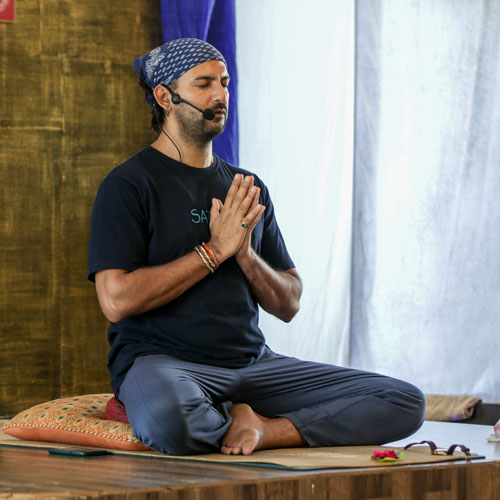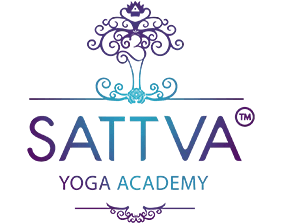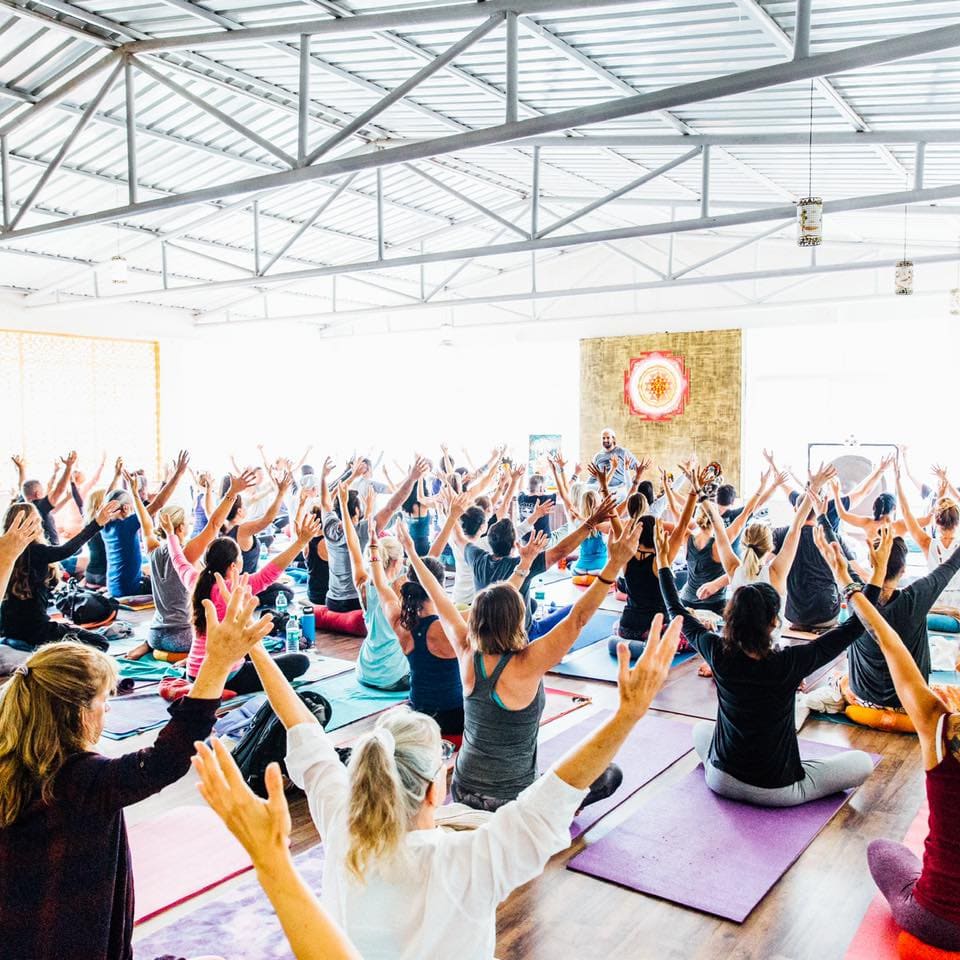Introduction
Yoga Alliance teacher training sets global standards that assure the quality of yoga education. As the key accrediting body in the yoga community, Yoga Alliance supports both new and experienced yoga teachers. Their programs ensure that teaching methods align with global wellness trends, helping instructors offer the most beneficial yoga experiences.
In today’s fast-paced world, the future of yoga teacher training is rapidly evolving. Key global trends influencing this change include:
Digital Expansion: The rise of online learning platforms allows for broader access to yoga teacher training. This trend enables aspiring teachers from any location to receive comprehensive training and certification.
Holistic Health Focus: There’s a growing emphasis on integrating mental health and mindfulness into yoga practices. Yoga Alliance teacher training now includes these aspects to meet the holistic health needs of students.
Cultural Sensitivity: As yoga spreads globally, training now also emphasises cultural sensitivity and inclusion, ensuring practices respect diverse backgrounds and traditions.
Historical Context and Evolution of Yoga Alliance Standards
Yoga Alliance teacher training has significantly shaped the landscape of yoga instruction globally since its inception. Founded with the aim to ensure a standardised approach to yoga teacher training, Yoga Alliance has continuously adapted its standards to keep up with the evolving nature of yoga practices worldwide.
The Beginnings
Foundation: Yoga Alliance was established in 1999, responding to a growing need for a universal standard in yoga teacher education.
Initial Standards: The original standards focused on a 200-hour training requirement, emphasizing anatomy, teaching methodology, philosophy, and practicum.
Key Milestones
200-Hour and 500-Hour Standards: These foundational programs were designed to cater to varying levels of depth in training, with the 500-hour providing an advanced curriculum.
Introduction of the RYT-500: The Registered Yoga Teacher (RYT) 500 designation marked a significant milestone, setting a higher level of expertise for teachers.
Expanding the Scope
Continuing Education Requirements: In the early 2000s, Yoga Alliance introduced continuing education standards to encourage lifelong learning among yoga teachers.
Online Learning Acceptance: The 2010s saw the acceptance of online learning modalities, reflecting technological advances and increasing accessibility.
Recent Updates: The latest revisions include more comprehensive standards for specialty areas such as children’s yoga and prenatal yoga, reflecting broader health and wellness trends.
Adapting to Global Trends
Cultural Sensitivity and Inclusion: As yoga’s popularity soared globally, Yoga Alliance updated its standards to ensure cultural respect and inclusion in all training programs.
Focus on Mental Health: Reflecting global health trends, recent updates have incorporated mental health training into the curriculum, emphasising yoga’s role in promoting overall well-being.

Impact of Global Health Trends on Yoga Training
The landscape of Yoga Alliance teacher training has been profoundly shaped by global health trends, particularly by the transformative impact of health crises like the COVID-19 pandemic. These events have not only influenced how yoga is practiced and taught but also demanded significant adjustments in training programs to address new health and wellness needs.
Influence of Health Crises
Pandemic Response: The COVID-19 pandemic catalyzed a major shift in Yoga Alliance teacher training towards online platforms, making yoga education more accessible during lockdowns and social distancing.
Health and Safety Protocols: Training now includes comprehensive health and safety guidelines to ensure that yoga classes are conducted in ways that protect both instructors and students.
Adjusting to New Wellness Trends
Holistic Health Emphasis: There has been a surge in demand for yoga that addresses not just physical fitness but also mental and emotional health. Yoga Alliance teacher training programs have expanded their curricula to include techniques for stress reduction, emotional management, and enhancement of mental clarity.
Incorporation of Meditation and Mindfulness: Amidst rising stress levels globally, there is an increasing integration of mindfulness and meditation into yoga sessions. Training now teaches future yoga instructors how to guide meditation sessions effectively as part of their yoga classes.
Adaptation to Remote Learning: The shift to online learning environments has required adaptations in teaching methods. Yoga Alliance has set standards to ensure that virtual training sessions are as rigorous and comprehensive as in-person sessions.
Sustainable Practices and Wellness
Environmental Awareness: Reflecting a global trend towards sustainability, yoga training now often includes elements of eco-consciousness and teachings on how to incorporate sustainable practices into yoga routines and business models.
Diversity and Inclusion: Recognizing the diverse needs of global communities, Yoga Alliance teacher training emphasizes inclusive practices that cater to all body types, abilities, and backgrounds, ensuring yoga remains accessible and relevant to everyone.

The Shift Towards Online Learning
The transition from in-person to online yoga teacher training programs has been one of the most significant changes within the Yoga Alliance framework. This shift has introduced both new opportunities and challenges, reshaping how yoga teacher training is delivered globally.
Transition to Online Platforms
Rapid Adaptation: The onset of the COVID-19 pandemic accelerated the move to online learning, as in-person classes were no longer feasible. Yoga Alliance quickly adapted by approving online training as a legitimate form for obtaining certifications.
Technology Integration: Utilising platforms like Zoom, Skype, and bespoke virtual classrooms, training programs have been able to offer interactive, real-time classes, closely mimicking the in-person experience.
Benefits of Online Yoga Certifications
Accessibility: One of the most profound benefits is accessibility. Aspiring yoga teachers from remote or underserved areas can now access quality training without the need for travel.
Flexibility: Online programs offer greater flexibility in scheduling, allowing students to balance training with personal and professional responsibilities.
Cost-Effectiveness: Without the need for physical venues, online training is often more affordable, making it accessible to a broader audience.
Challenges of Online Yoga Certifications
Engagement and Interaction: Maintaining student engagement online can be challenging. The lack of physical presence can reduce the interpersonal interaction that enriches learning.
Practical Training Difficulties: Teaching the nuances of physical postures and adjustments online is more complex than in-person, potentially impacting the quality of training.
Yoga Alliance’s Quality Assurance
Updated Standards: Yoga Alliance has updated its standards to ensure that online training programs meet the rigorous educational requirements necessary for professional teaching certification.
Continuous Monitoring and Feedback: They have implemented mechanisms for continuous feedback from students and educators to improve the structure and delivery of online programs.
Resource Support: Yoga Alliance provides extensive resources and guidance to help training providers enhance their online offerings, ensuring a high-quality learning experience.
Technological Innovations Influencing Yoga Practices
The integration of technology in Yoga Alliance teacher training is revolutionising how yoga is taught and practised. Innovations such as virtual reality (VR), streaming technology, and mobile apps are not only enhancing the learning experience but also broadening the reach of yoga education.

Current Technological Integrations
Virtual Reality: VR technology is being explored for its potential to simulate immersive yoga environments. This can transport students to serene locations, from tranquil beaches to peaceful forests, all from the comfort of their homes.
Streaming Technology: Live streaming has become a staple in delivering real-time yoga classes online. This technology allows for interactive sessions, where instructors can offer immediate feedback and adjustments just as they would in a physical classroom.
Mobile Apps: Comprehensive yoga training apps have been developed to provide learners with easy access to sessions, pose libraries, and guided meditations. These apps often include features for tracking progress and scheduling, making it easier for users to maintain a consistent practice.
Future Technological Trends
Augmented Reality (AR): AR could soon be incorporated into yoga training to overlay digital information onto the physical world, helping to correct poses and alignments in real time.
Artificial Intelligence (AI): AI is expected to personalise yoga training by adapting sequences and difficulty levels based on the user’s progress, physical condition, and preferences.
Wearable Technology: Integrating wearables that monitor heart rate, body posture, and breathing patterns could help in providing feedback that is as precise as personal training sessions.
Adapting Standards for Technological Advances
Quality Control: Yoga Alliance is proactively adapting its standards to incorporate these technological advances, ensuring that the quality of teacher training remains high regardless of the medium.
Certification Processes: They are also exploring how technology can be used in the certification process, potentially using AI and machine learning to assess teaching competencies and knowledge retention.
Globalisation of Yoga Training
As yoga continues to gain popularity worldwide, Yoga Alliance teacher training plays a pivotal role in standardising yoga instruction across different countries. This global standardisation ensures that regardless of where a student trains, they receive a consistent level of quality education that adheres to universally recognized principles.
Standardising Yoga Teacher Training Globally
Consistent Quality: Yoga Alliance has established a framework that sets consistent educational standards for yoga teacher training internationally. This framework includes a detailed curriculum that covers teaching methodology, anatomy, philosophy, and practicum.
Certification Recognition: By standardising training, Yoga Alliance ensures that certifications are recognized and respected globally. This recognition not only enhances the mobility of yoga teachers but also helps students trust the quality of training they receive, no matter the location.
Adapting to Diverse Cultural Contexts
Cultural Sensitivity: While maintaining core standards, Yoga Alliance also encourages adaptations to reflect the diverse cultural contexts in which yoga is taught. This includes incorporating local traditions and practices into the training programs without compromising the integrity of the yoga teachings.
Inclusive Curriculum: Efforts are made to ensure the curriculum is inclusive and accessible, taking into account different cultural norms and expectations. This inclusivity promotes a broader understanding and respect for the varied ways in which yoga can be practised and taught around the world.
Maintaining Core Principles Amidst Diversity
Philosophical Roots: Despite the geographical adaptations, Yoga Alliance insists on teaching the philosophical roots of yoga, ensuring that all certified teachers have a deep understanding of yoga’s history, purpose, and values.
Ethical Teaching Practices: Ethical practices are emphasised to maintain the dignity and integrity of yoga teaching. This includes ethical interactions, respecting local customs, and fostering a safe and supportive learning environment.
Benefits of Global Standardization
Enhanced Collaboration: Standardisation allows for greater collaboration among yoga communities worldwide, fostering an exchange of ideas and practices.
Quality Assurance: Students and teachers alike benefit from the assurance of quality and the alignment of training standards, which are designed to safeguard the essence and benefits of yoga.

Predictions for the Future of Yoga Alliance Standards
As the practice of yoga continues to evolve globally, the standards set by Yoga Alliance teacher training are also anticipated to adapt in response to emerging trends and needs. Experts within the yoga community provide insights and predictions on how these standards might develop to further enhance the training and practice of yoga worldwide.
Expert Insights on the Evolution of Yoga Training
Increased Specialisation: Predictions suggest that Yoga Alliance may introduce more specialised training paths to cater to diverse student needs, such as yoga for mental health, advanced therapeutic yoga, and yoga for different age groups.
Integration of Technology: Experts foresee a greater integration of technology in yoga training. This could include the use of virtual and augmented reality for anatomy teachings and posture corrections, making the learning process more interactive and precise.
Adapting Standards to Global Trends
Emphasis on Online Certification: With the success seen during the pandemic, the trend towards online learning is expected to continue. Yoga Alliance is likely to further refine and enhance its standards for online teaching certifications, ensuring they match the rigor and depth of in-person training.
Focus on Mental Wellness: As mental health becomes a more prominent global concern, Yoga Alliance standards are predicted to increasingly incorporate mental wellness into the curriculum, ensuring that yoga teachers are equipped to address this vital aspect of health.
Cultural Adaptability
Localising Training: There is an expected shift towards more localised training programs that respect and incorporate local cultures and languages, making yoga more accessible and relevant to various populations.
Ethical and Inclusive Practices: As awareness of social justice issues rises, Yoga Alliance is predicted to integrate more comprehensive guidelines on ethical practices and inclusivity in training programs.
Environmental Consciousness
Sustainability in Yoga Practices: With growing global emphasis on sustainability, future standards might include practices and teachings that focus on environmental consciousness within the yoga practice, promoting eco-friendly yoga studios and practices.
Conclusion
The evolution of Yoga Alliance teacher training reflects a dynamic and responsive approach to the changing needs of the global yoga community. As we have explored, the integration of new technologies, the adaptation to global health trends, and the emphasis on cultural sensitivity are just a few of the transformative steps Yoga Alliance has taken to ensure that yoga teacher training remains comprehensive, accessible, and relevant.
Summary of Key Points
Global Standards: Yoga Alliance has played a pivotal role in setting global standards for yoga teacher training, ensuring consistency and quality across different countries and cultures.
Technological Integration: The incorporation of technologies like virtual reality and streaming services has revolutionised the delivery of training, making it more accessible and engaging.
Health and Wellness: There has been a significant shift towards including comprehensive health and wellness topics within the curriculum, addressing both physical and mental health aspects.
Cultural Inclusivity: Adapting training to diverse cultural contexts while maintaining core principles ensures that yoga remains respectful and relevant to various global audiences.
Future Trends: Predictions indicate that Yoga Alliance will continue to adapt its standards to include more specialisation, increased focus on mental wellness, and greater emphasis on sustainability and ethical practices.

